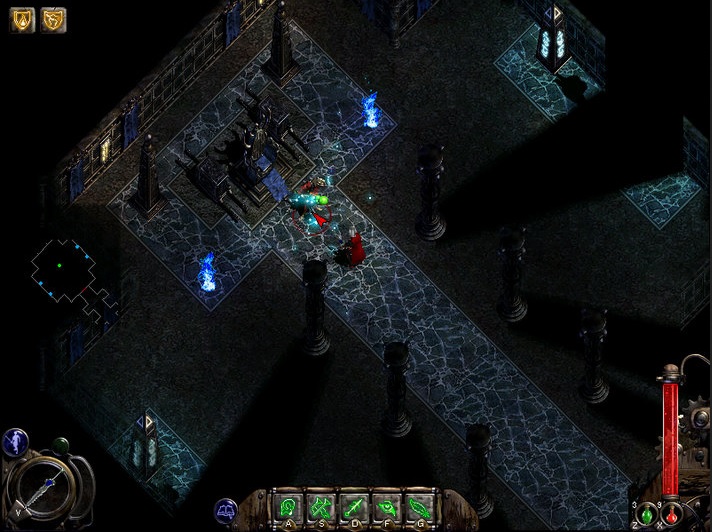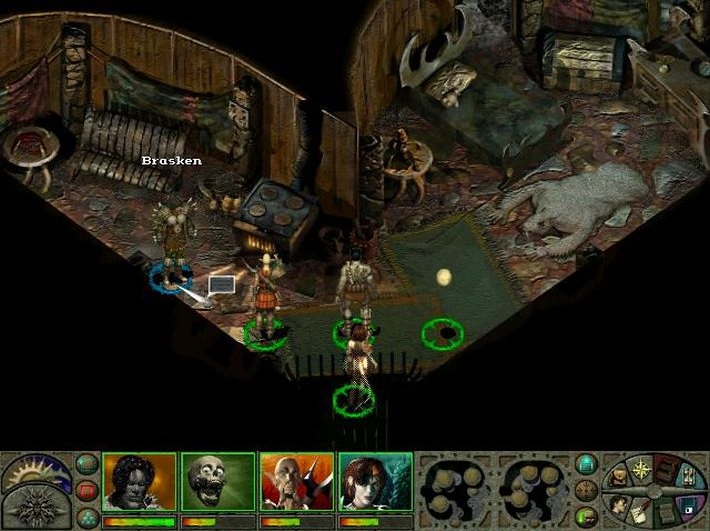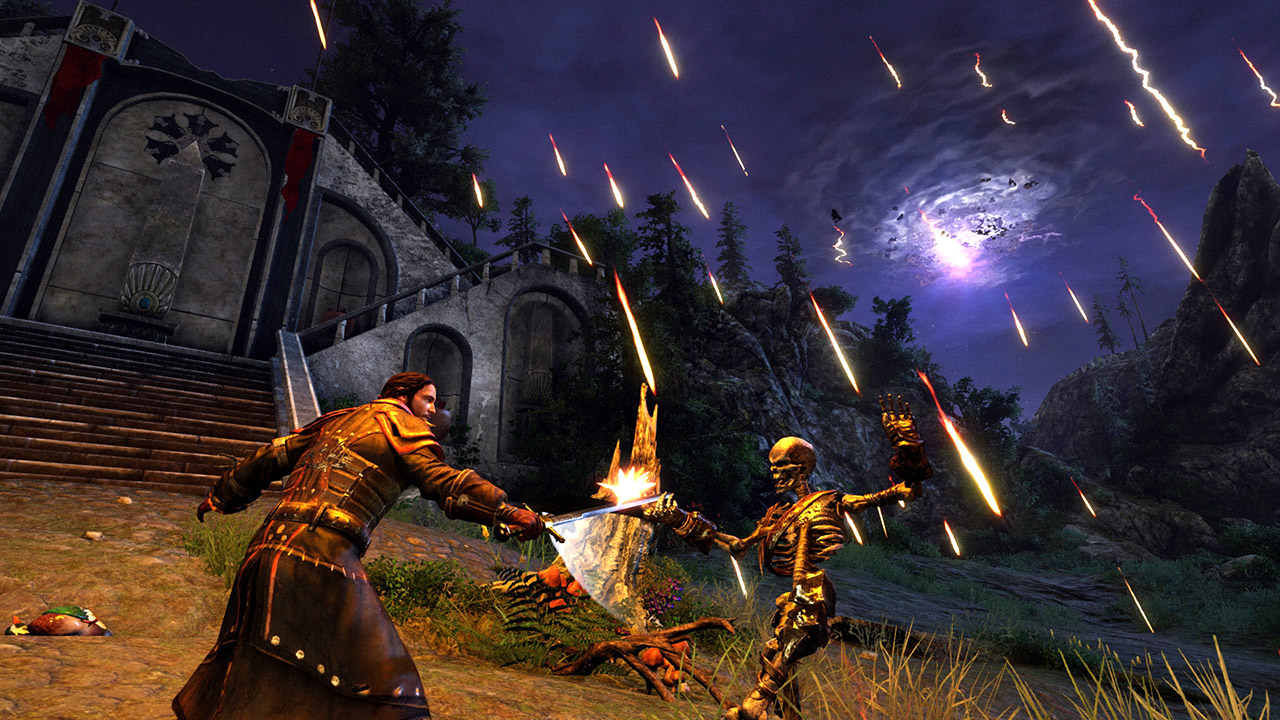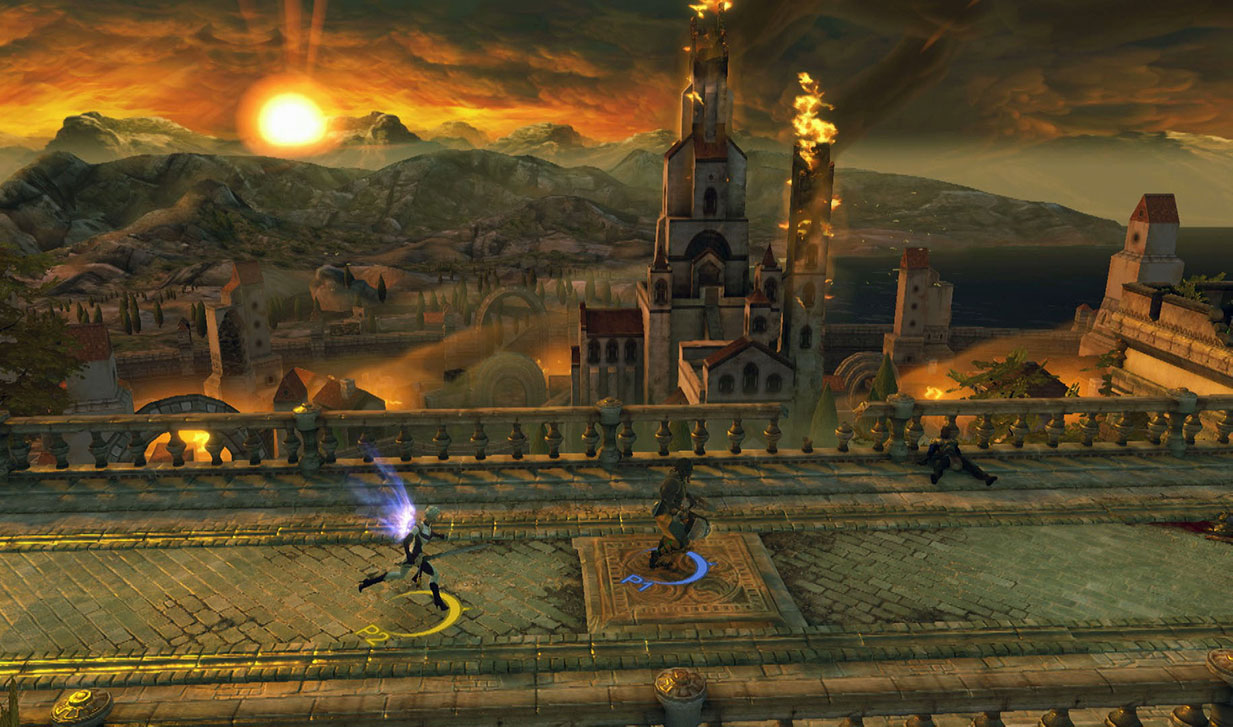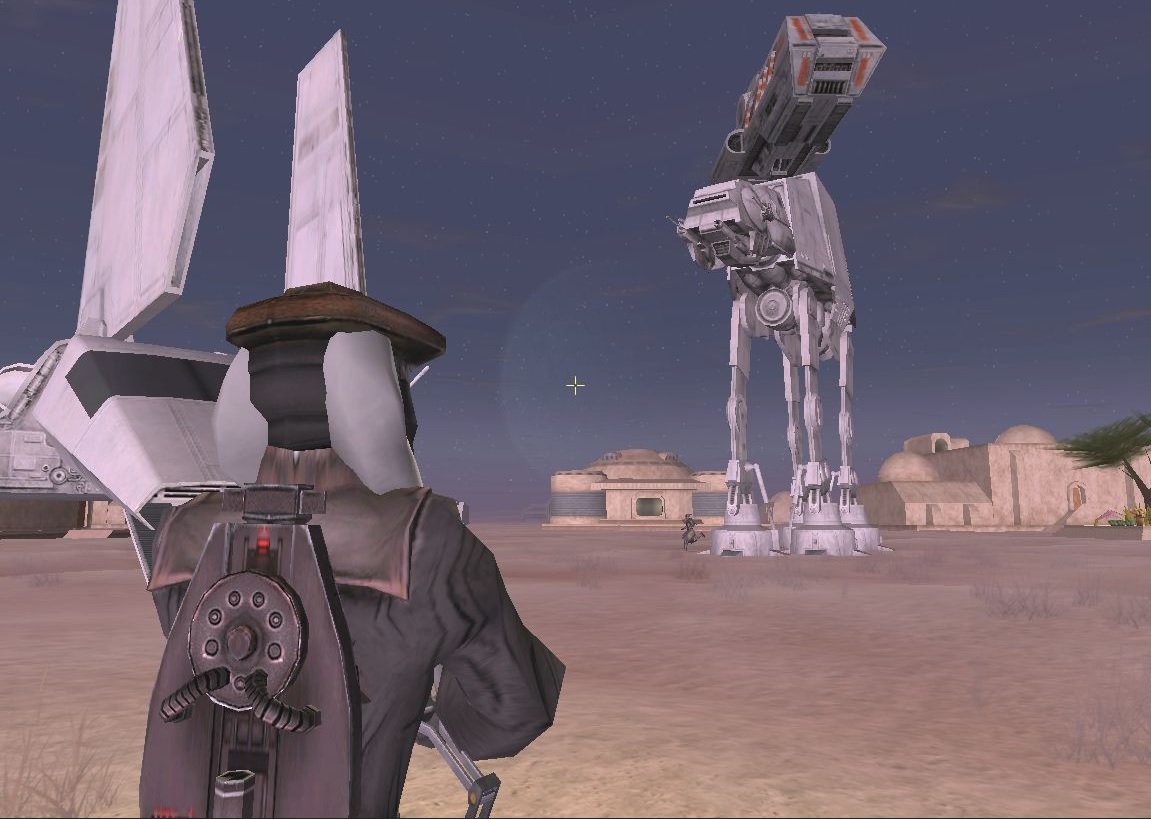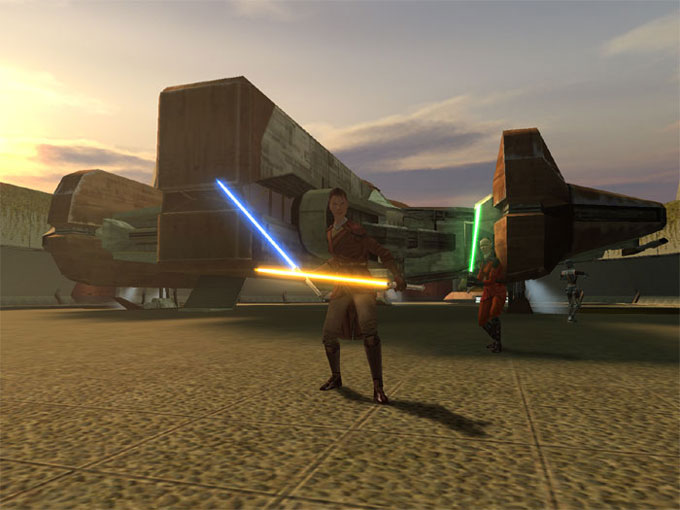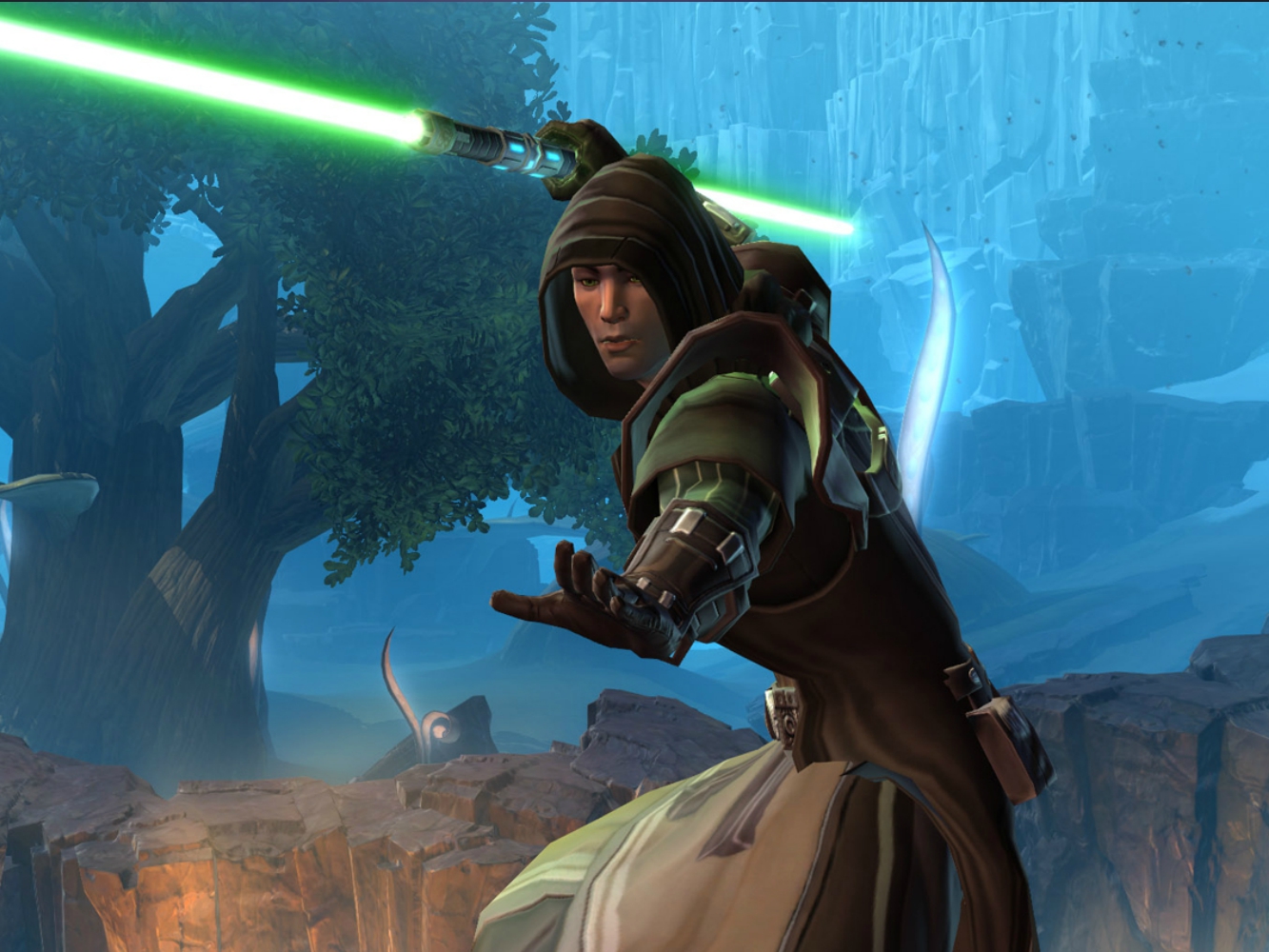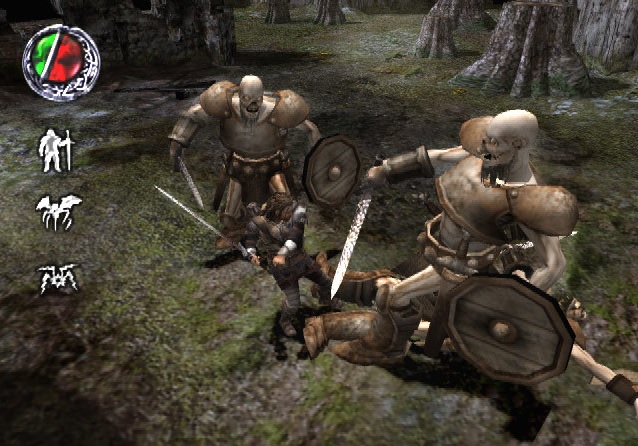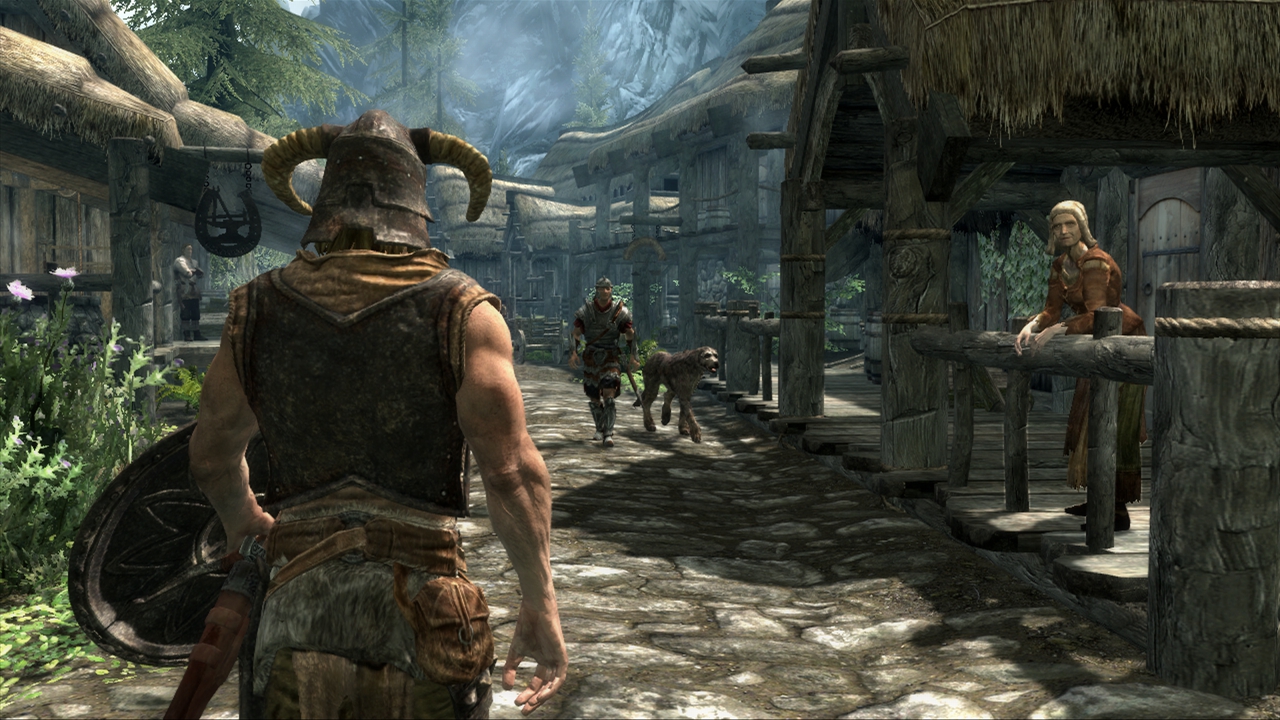In Pictures: Tom's Top 50 RPGs
Today we take a journey spanning 40 years of role-playing games (RPGs). Exciting examples range from classics like the Ultima series to the modern blockbuster Skyrim. Old or new, the following 50 games left their mark on the genre.
Nox (2000)
The action-RPG Nox was published in 2000 and had a hard time, because Diablo II came out only six months later. Many players didn’t even try it out.
Developer Westwood actually managed to create a pretty solid action RPG. You fought through dungeons, caves and massive amounts of enemies as a warrior, a conjurer or a wizard in a similar way to Diablo. The game also included small puzzle sequences that involved avoiding or disarming traps.
However, the very limited field of view was annoying, especially when it swayed back and forth in caves.
Planescape: Torment (2000)
Planescape: Torment is one of the best RPGs ever made, and should be looked at as a cohesive work of art.
Your character wakes up as a nameless creature in the morgue of the city Sigil with complete amnesia. While searching for answers, you find out more and more about the bizarre and alien world of Planescape: Torment and meet weird characters, such as a flying skull. As the story unfolds, the player needs to grapple with philosophical quandaries as well.
Combat plays a rather small role in Planescape: Torment, but the complex story and game world more than compensate. This title is a must for every RPG player.
Pokémon (1996)
Every gamer should know the names Bisasam, Glumanda, Schiggy and, of course, Pikachu. The first two editions of the Pokémon series, Green and Red, came out in 1996 on the Game Boy. The first titles to land in the U.S. were the Red and Blue editions.
Get Tom's Hardware's best news and in-depth reviews, straight to your inbox.
From that point onward, numerous schoolchildren took every opportunity they had, be it during lunch breaks or on the way home, to collect and train Pokémon. The simple game design captured its audience from the start: you wander through the giant region Kanto, capture an ever-increasing number of Pokémon, fight other ones in round-based battles, achieve higher ranks by winning against Masters and fight the villainous Team Rocket. The game occupied its players for numerous hours.
Pokémon didn’t stop with video games, though. Spinoffs include a TV series, movies, comics and card games. Expo 2005 in Japan even featured a whole amusement park.
Risen (2009), Risen 2 (2011), Risen 3: Titan Lords (2014)
Risen is essentially Gothic with a new name. The first part of the series in particular is reminiscent of the developer’s former franchise in both graphics and gameplay mechanics. You assume the role of a nameless hero on an island, join one of three factions and set out to explore the picturesque, as well as dangerous, island world.
Risen 2 added pirates and guns like muskets to the mix, and made it possible to travel to more than one island. The faction choice was not as meaningful anymore, though. This changed again in the most recent installment, Risen 3: Titan Lords, which felt more like the original Gothic.
Sacred (2004), Sacred 2: Fallen Angel (2008), Sacred Citadel (2013), Sacred 3 (2014)
Sacred was supposed to be the German answer to Diablo. The action RPG might not have lived up to this lofty goal, but it still managed to offer good, solid entertainment. A highlight was the beautiful and varied game world.
Unfortunately, the third and most modern installment largely got rid of the Diablo-like game design, and features a bunch of fairly simple and linear co-op battles instead. It doesn’t really have much in common with the first two games in the series.
Star Wars Galaxies: An Empire Divided (2003)
Star Wars Galaxies was the first MMORPG set in the Star Wars universe when it came out in 2003, fulfilling many gamers’ dreams to finally live a second life in “a galaxy far, far away.”
The online RPG was set between Episode IV and Episode V. It offered many diversions, including crafting, PvP matches and a huge number of quests that even made it possible to meet Darth Vader and Luke Skywalker.
Star Wars Galaxies was shut down right before Star Wars: The Old Republic opened on December 15, 2011.
Star Wars: Knights Of The Old Republic (2003), Star Wars: Knights Of The Old Republic 2 – The Sith Lords (2005)
KotOR is one of the most beloved BioWare RPGs. It managed to capture the Star Wars movies’ essence very well. Highlights of the AAA RPG include a fantastic story, lively companions and significant consequences for the player’s actions.
Unfortunately, the second part, which was developed by Obsidian, wasn’t able to live up to the standard set by its predecessor. Even so, it was a solid sequel, in spite of seeming unfinished in places.
Many fans would like to see another installment.
Star Wars: The Old Republic (2011)
World of Warcraft set in the Star Wars universe would be a good tag line for SWTOR by BioWare. Its game mechanics are practically identical to those of Blizzard’s behemoth.
It’s still a great MMORPG due to the special Star Wars atmosphere and the many opportunities it provides for its players: space fights, PvP battles and building your own fortress. It’s now also free-to-play.
Another highlight consists of the well-done dialogs that feature voice acting and compel you to make a lot of decisions.
Tales Of The Unknown: Volume I – The Bard's Tale (1985), The Bard’s Tale II: The Destiny Knight (1986), The Bard's Tale III: The Thief of Fate (1988), The Bard's Tale (2005)
The Bard’s Tale games are RPG classics. The action takes place in the settlement of Skara Brae, which actually exists and hails from the Neolithic period. The story is set in a world inspired by medieval times, though. The games offer dungeon crawls with round-based combat. You create and control a party with members of different classes.
There was a new installment in 2005, but it really didn’t have much in common with the series' previous games. Instead, it focused on action and combat, as well as bawdy humor. Fans didn’t really warm to the fourth installment, though it did provide a reasonably entertaining way to pass a few hours.
The Elder Scrolls: Arena (1994), The Elder Scrolls II: Daggerfall (1996), The Elder Scrolls III: Morrowind (2002), The Elder Scrolls IV: Oblivion (2006), The Elder Scrolls V: Skyrim (2011), The Elder Scrolls Online (2014)
The Elder Scrolls games are heavyweights in the RPG arena. The first two installments offered huge gaming worlds, but unfortunately also suffered from an equally huge number of bugs. Bethesda created three absolutely fantastic modern RPGs with Morrowind, Oblivion and Skyrim, though.
Time and again the developer managed to deliver a compelling game world with a great atmosphere that just sucked you in. Following the main quest line is just as good of an option as exploring the world freely and completing side quests along the way. And there are still new things to be found even after (literally) hundreds of hours of playing the game.
The Elder Scrolls Online is the first MMORPG set in The Elder Scrolls’ world of Tamriel.
-
babernet_1 Please don't use this format. I can only jump from the first to the second picture then it locks up.Reply
EDIT
Okay, it was addblock plus. I disabled it for this site and now the presentation works.
Very clever, Toms Hardware.
-
zero messiah "The most notable titles are Final Fantasy VII and Final Fantasy IX. The former was the first game in the series to feature 3D graphics and sold approximately 10 million copies worldwide. The latter was the first MMORPG in the series, which is now being continued with Final Fantasy XIV."Reply
Final fantasy IX is for Playstation 1 and is not an mmorpg. FF 11 is the first mmo for the series, and if you want to talk about the most notable, FF 7 and 6 are.
-
synphul I agree, ff6 and 7 were pretty notable. The ff series came a long way since the first one on the nes. Loved that game, got me hooked. They had a few mediocre titles but most of them were pretty good.Reply -
Super_Nova It's a real shame that The Phantasy Star series was left out. I also miss Shining Force in the list.Reply -
bit_user Reply
Maybe upgrade your browser, or at least use a HTML 5 compliant browser for this site? It doesn't seem fair that sites should have to cater to the lowest common denominator, like it's 1999 or something.15347117 said:Please don't use this format. I can only jump from the first to the second picture then it locks up.
-
bit_user Reply
That's the problem with these articles. A few people will always be upset that some of their favorite games got left out.15347603 said:It's a real shame that The Phantasy Star series was left out. I also miss Shining Force in the list.
I actually wonder how much of that is due to games that perhaps weren't that great, but the person either hasn't played a wide variety or maybe it was just during their younger years so it made a greater impression on them than it would now. I'm not saying that applies to either of the titles you mentioned, since I haven't played them.
It does seem a bit odd how various different subgenres were combined into a single list. Such as turn-based, realtime, and MMORPGs. I wonder if some of these titles mightn't have even qualified as adventure games.
-
nukemaster Reply
I highly doubt they are using a browser that can not support the site.15348011 said:
Maybe upgrade your browser, or at least use a HTML 5 compliant browser for this site? It doesn't seem fair that sites should have to cater to the lowest common denominator, like it's 1999 or something.15347117 said:Please don't use this format. I can only jump from the first to the second picture then it locks up.
It is more likely they have Adblock or another plugin/addon installed that is messing with the page(I would also guess firefox as the web browser). It does have some negative side effects because the assets for the site can be hosted on various servers.
If the lowest common demonstrator was not main factor in webpages we would not be back to the 90's with animated gif's being more popular than videos online because cell phones/tablets do not always work with video sharing sites(flash limit, not that FLV playback would have caused any of these battery issues users claimed). An mp4 video actually takes less space than these gifs at the same frame rate and resolution(all without the 8-bit color limitation).
